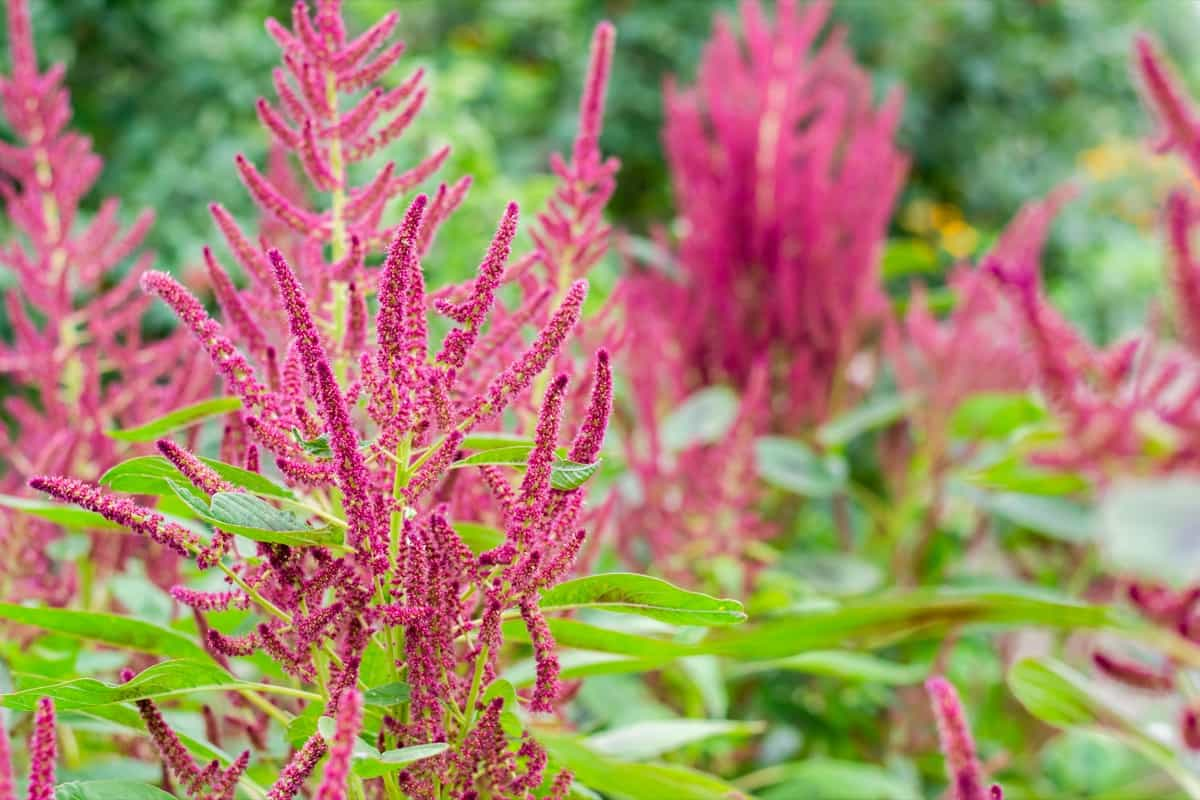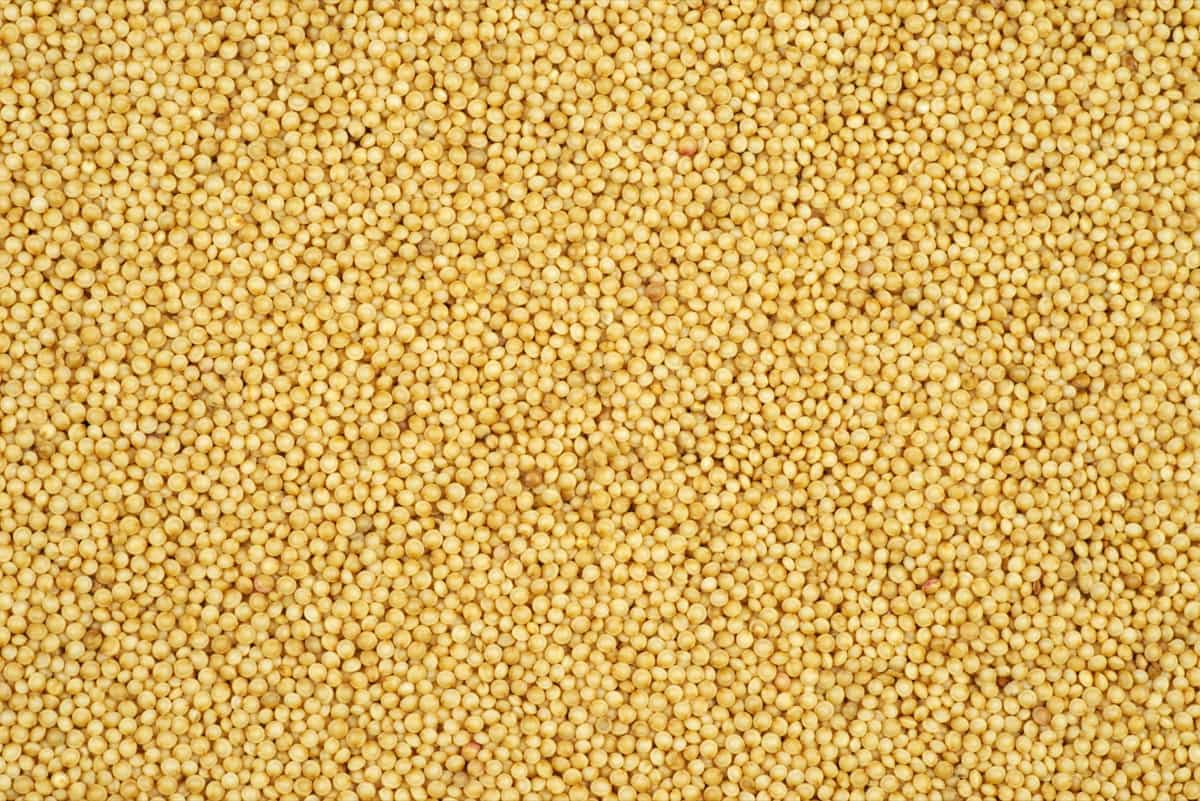Amaranth millet farming, conducted on a one-acre plot of land, involves the cultivation of a versatile and nutritious grain crop. This analysis explores the economics and profitability of such a farming project. By examining the costs associated with production and estimating potential profits, this report provides valuable insights for individuals interested in engaging in amaranth millet farming on a small-scale basis. Let’s check out the 1-acre project report of Amaranth millet/Grain farming below.

What is Amaranth Millet Farming?
Amaranth millets are also known as Rajgira/Ramdana/Cholaplants belonging to the Poaceae family. They are characterized by their tall, erect stems, ranging from 30 cm to 250 cm in height, with broad leaves and clusters of small, densely packed flowers. These grains are rich in essential nutrients such as proteins, dietary fiber, vitamins, and minerals. Amaranth millets are known to be drought-tolerant and can adapt to diverse agro-climatic conditions, making them a popular crop choice in regions with limited water availability.
Market and Demand for Amaranth Millet Farming
The growing awareness of Amaranth Millet as a nutritious superfood has led to a surge in demand worldwide1. This trend is primarily driven by consumers seeking healthier alternatives to meet their daily nutritional requirements1. Various regions, including North America, Europe, the Asia Pacific, Latin America, and Africa, influence the global amaranth market. In India, Rajasthan, Karnataka, Maharashtra, Uttar Pradesh, Haryana, and Gujarat collectively contribute over 83% of the total millet production.
Best High-Yielding Variety for Amaranth Millet Farming
Several high-yielding and scientifically verified varieties of amaranth millets have been developed. One such variety is “CO 7,” a high-yielding amaranth millet variety released by the Tamil Nadu Agricultural University, India. It is known for its early maturity, good grain quality, and resistance to lodging.
Another amazing variety is “K 4,” developed by the Indian Agricultural Research Institute, which exhibits high yield potential, good nutritional Quality, and tolerance to major pests and diseases. Scientific research and field trials have extensively tested and validated these varieties.
Best Package and Practices for Amaranth Millet Farming
Variety Selection: Choose high-yielding and disease-resistant varieties suitable for your agro-climatic region. Varieties like “CO 7” and “K 4” have shown promising results in terms of yield potential, Quality of the grain, and resistance to pests and diseases.
Land Preparation: Prepare the land well in advance by plowing and leveling it to create a fine seedbed. Remove weeds, stones, and debris from the field to ensure proper seed germination and establishment.
Seed Rate and Sowing: Use healthy and certified seeds for better germination and uniform crop growth. The recommended seed rate is approximately 5-6 kg per acre. Sow the seeds at a 2-3 cm depth with a row-to-row spacing of 20-25 cm to facilitate proper plant growth and minimize competition.
Nutrient Management: Conduct soil testing to determine the nutrient status of the soil. Based on the results, apply organic manure or compost before sowing to improve soil fertility. Supplement the soil with recommended nitrogen, phosphorus, and potassium (NPK) fertilizers during the crop’s growth stages for optimal nutrient uptake.
Irrigation: Amaranth millet is a drought-tolerant crop, but adequate moisture during critical growth stages is essential for better yields. Practice proper irrigation methods such as furrow or drip irrigation to provide sufficient water without waterlogging. Monitor soil moisture levels regularly and irrigate as per the crop’s water requirements.
Weed Management: Weeds can significantly impact amaranth millet yields. Practice timely and effective weed control measures, including manual weeding, herbicides, or mulching. Weed management should be done at the early crop growth stages to prevent weed competition and ensure optimum nutrient utilization.
In case you missed it: Economics of 1-Acre Barnyard Millet Cultivation: Cost, Profit, and Project Report

Pest and Disease Control: Regular scouting and monitoring for pests and diseases are essential. Common pests affecting amaranth millet include stem borers, aphids, and leaf miners. If necessary, employ appropriate pest control methods such as biological control, cultural practices, or judicious use of insecticides. Diseases like leaf spots and downy mildew can be managed by using disease-resistant varieties and adopting crop rotation practices.
Harvesting: Harvest amaranth millet when the grain moisture content reaches 12-14%. Cut the plants at the base using sickles or harvesters. Allow the harvested crop to dry in the field for a few days before threshing to reduce moisture content and prevent spoilage. Post-Harvest Management: Thresh the dried crop using threshing machines or beating it with sticks. Winnow the grains to remove chaff and impurities. Properly store the grains in moisture-proof containers to maintain their Quality and prevent infestation by pests.
1-Acre Project Report of Amaranth Millet/Grain Farming
The components included in the cost of cultivation for amaranth millet farming typically consist of seeds, land preparation, fertilizers, organic manure/compost, irrigation, weed management, pest and disease control, harvesting and threshing, post-harvest management, and miscellaneous expenses.
| Components | Estimated Cost (INR) |
| Seeds | 1,500 – 2,000 |
| Land Preparation | 1,000 – 1,500 |
| Fertilizers | 2,000 – 2,500 |
| Organic Manure/Compost | 1,000 – 1,500 |
| Irrigation | 500 – 800 |
| Weed Management | 500 – 800 |
| Pest and Disease Control | 1,000 – 1,500 |
| Harvesting and Threshing | 500 – 800 |
| Post-Harvest Management | 500 – 800 |
| Miscellaneous Expenses | 500 – 800 |
| Total Cost | 10,000 – 13,000 |
Total Returns and Net from 1Acre Amaranth Millet Farming
- Total Yield: 9 quintals = 900 kg 12 quintals = 1200 kg
- Total Returns: 9 quintals x 3200 INR/quintal = 28,800 INR 12 quintals x 3200 INR/quintal = 38,400 INR
- Net Profit: To calculate net Profit, we deduct the total cost of cultivation from the total returns.
Assuming the cost of cultivation falls within the earlier estimated range of 10,000 to 13,000 INR, we will take the midpoint of 11,500 INR as the average cost.
- Net Profit (for nine quintals): Total Returns – Cost of Cultivation 28,800 INR – 11,500 INR = 17,300 INR
- Net Profit (for 12 quintals): Total Returns – Cost of Cultivation 38,400 INR – 11,500 INR = 26,900 INR
- Therefore, the net Profit from 1 acre of amaranth millet farming can range from 17,300 INR to 26,900 INR, depending on the yield.
Challenges and Risks in Amaranth Millet Farming
Amaranth millet farming poses certain challenges and risks that farmers should know about. These include susceptibility to pests and diseases, weed competition, unpredictable weather conditions, limited availability of high-quality seeds, market fluctuations, and lack of awareness among consumers. Adequate pest management, weed control measures, crop diversification, adoption of climate-resilient practices, and market research are necessary to mitigate these risks and ensure a successful amaranth millet farming venture.
In case you missed it: Project Report of Little Millet Cultivation: Production Economics, Farming Cost and Profit

Conclusion
1-acre amaranth millet farming can be profitable with proper planning and implementation. While the initial investment and operational costs are involved, the increasing demand for nutritious superfoods presents an opportunity for farmers. By adopting best practices, managing costs effectively, and accessing suitable markets, farmers can achieve favorable returns and contribute to sustainable agriculture.
- Feed Your Flock for Less: Top 10 Tips to Save on Chicken Feed
- Ultimate Guide to Ossabaw Island Hog: Breeding, Raising, Diet, and Care
- Hatching Answers: The Top 10 Reasons Your Chickens Aren’t Laying Eggs
- Eggs and Economics: Breaking Down the Cost of Raising Backyard Chickens
- Defend Your Greens: Proven Methods to Keep Iguanas Out of Your Garden
- Ultimate Guide to Cinnamon Queen Chicken: A Comprehensive Guide for Beginners
- Ultimate Guide to California Tan Chicken: Breeding, Raising, Diet, Egg-Production and Care
- Ultimate Guide to Marsh Daisy Chicken: Breeding, Raising, Diet, and Care
- 10 Types of Chicken Farming Businesses You Can Start for Profits